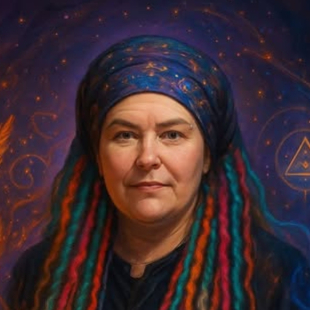Understanding Isn’t the End: The Courage to Feel Anyway
- Gin

- Sep 13
- 4 min read
There’s a certain kind of lie I told myself for years: If I understand it, I’m over it.
I wore understanding like armor. I could dissect trauma, analyze relationships, and explain dysfunction with the precision of a surgeon. Childhood wounds? I could map them onto family dynamics. Betrayal? I could chart it through attachment theory. Loss? I could recite the five stages of grief like flashcards.

But here’s the thing: even when you know the “why,” your body still trembles at the memory. Even when you understand the trauma, your nervous system still floods when you smell that cologne or hear that tone of voice.
Understanding is not the end.
I learned this truth from one of my greatest teachers, Dr. Charles Burack. Chuck had this way of slicing through my intellectual defenses without ever shaming me. One day in class, he said words that branded themselves onto my soul:
“Just because you understand why it happened to you doesn’t mean you’re not allowed to have feelings about it.”
In that one sentence, he dismantled years of self-protection.
The Myth of Mastery Through Analysis
We live in a culture addicted to analysis. We equate understanding with mastery. If we can label it, diagnose it, put it in a neat box — we believe we’re safe from it.
But understanding without feeling is a half-life. It leaves us detached from the very thing that makes us human: the capacity to ache, to rage, to weep, to laugh in relief.
Psychologist Silvan Tomkins, whose work on affect theory we studied with Chuck, said feelings are the primary language of the human system. Daniel Siegel’s research on emotional intelligence builds on this: emotions are not obstacles to intelligence, they are integral to it. They guide decision-making, empathy, and resilience.
Yet so many of us were taught to bypass our emotions — especially if we could “explain” them away. We were trained to be fluent in justification, but mute in vulnerability.
The Discovery: My Feelings Spoke a Different Language
When I entered grad school, I told Chuck — earnestly — that I didn’t think I had feelings. I could talk about ideas for hours, but I couldn’t locate sadness, anger, or joy in myself.
Chuck just smiled, with that look of deep knowing, and said,
“They’re there. They just speak a different language for you.”
He was right. My feelings weren’t absent — they were embodied, sensory, energetic. I experienced emotions as tightness in my chest, buzzing under my skin, sudden tears in my eyes without an obvious story. My body spoke before my brain did.
Chuck helped me translate that language. He taught me that being intellectual wasn’t a disconnection — it was just one doorway. My task was to integrate the body’s voice, the soul’s whisper, the heart’s ache.
Why Understanding Isn’t Enough
Science backs this up. Neuroscience shows that naming emotions can calm the amygdala, but only feeling them fully allows the nervous system to complete its cycle. Cognitive Behavioral Therapy helps us reframe thoughts, but Somatic Experiencing reminds us that trauma is stored in the body.
Understanding may bring clarity. But only feeling brings release.
And release doesn’t mean erasing the wound. It means holding it differently. It means your body no longer trembles every time the old memory resurfaces. It means you can tell your story without drowning in it.
Integration: The Courage to Feel Anyway
So how do we live this out?
First, we stop treating feelings like disobedient children that need to be silenced. We start listening to them as sacred messengers. Anger is a boundary alarm. Grief is love with nowhere to go. Joy is a compass toward what enlivens us.
Here are three practices you can try this week:
The Body Scan Pause
Set a timer for two minutes. Sit still. Scan your body from crown to toes. Notice any tightness, warmth, heaviness, or flutter. Instead of asking, “What’s wrong with me?” ask, “What is this sensation trying to tell me?”
The Feelings Journal
Write a page each morning, not about what happened, but about how it felt. Don’t analyze. Just let the raw words out: “I felt tight, restless, scared, hopeful.” Watch as your body finds release through the page.
The Permission Statement
When an old trigger arises, whisper Chuck’s line to yourself: “I am allowed to feel this, even if I understand it.” See what happens when you stop policing your emotions.

The Reality Check
Here’s the reality check: You can’t out-think your way out of being human.
Understanding is useful, yes. It can be illuminating, even liberating. But it’s not the finish line. Feeling is not the enemy of wisdom — it is wisdom.
Chuck’s teaching was not just academic. It was pastoral, mystical, profoundly human. He reminded me that feelings are holy data, and that my right to feel was never revoked by my ability to explain.
So, this week, I pass that reminder on to you: Just because you understand doesn’t mean you’re done. You are still allowed to feel. In fact, your humanity depends on it.




Comments